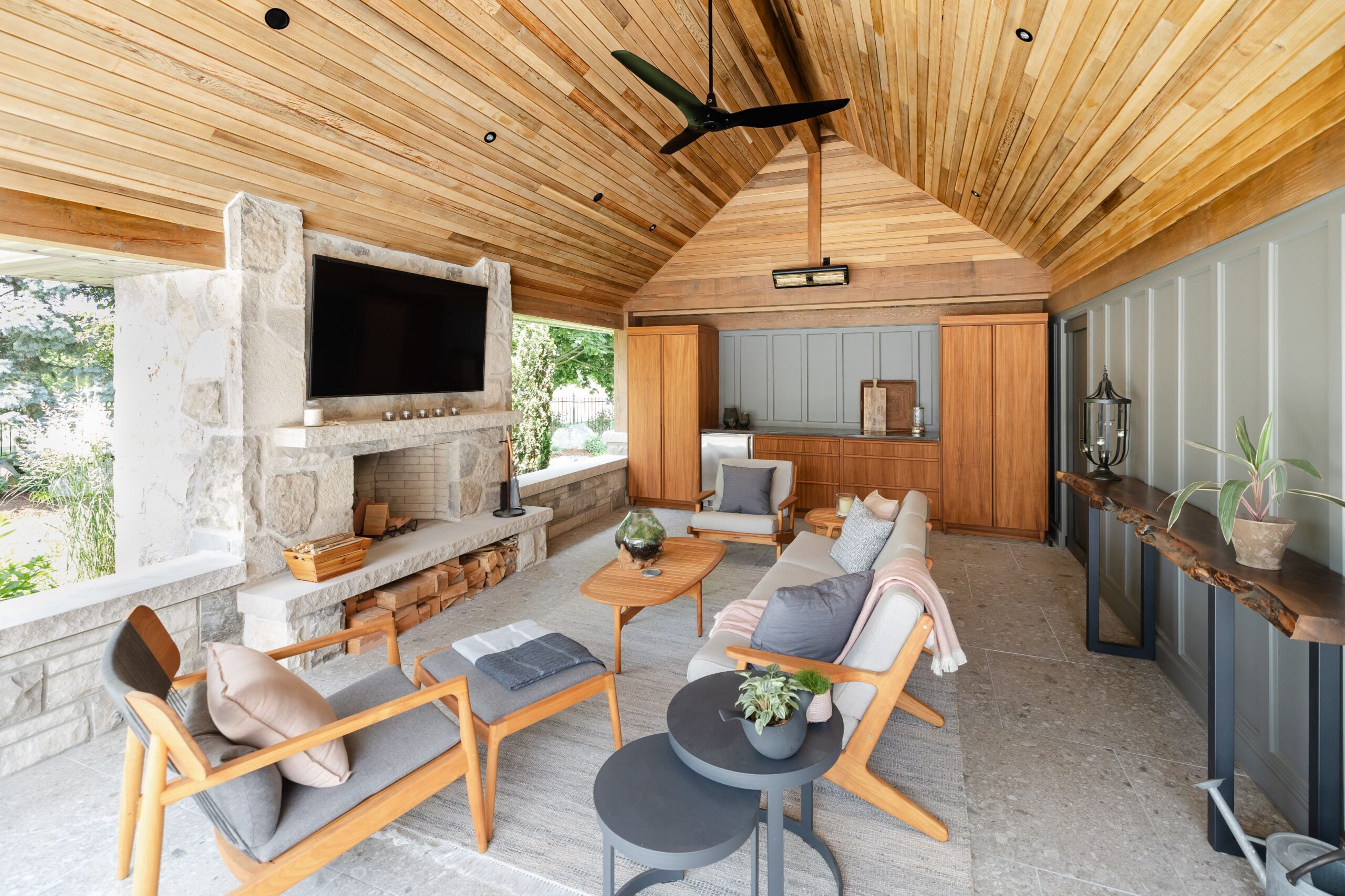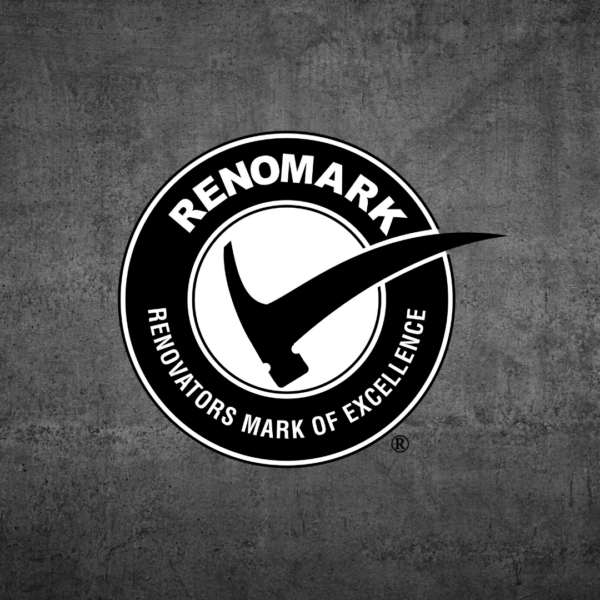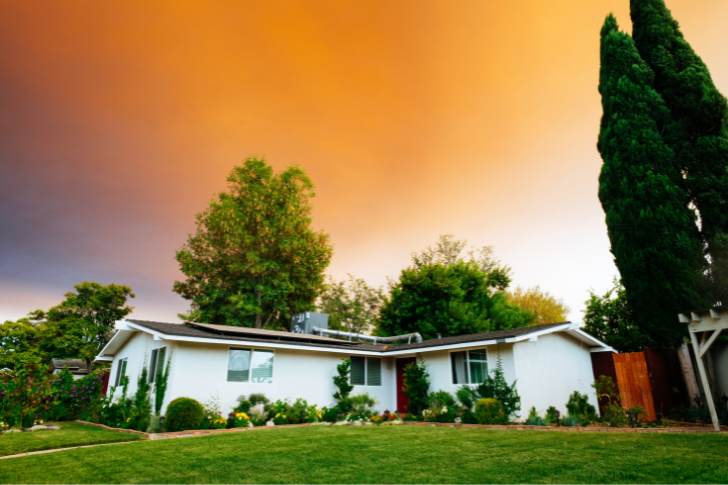
Approximately 8,000 wildfires occur each year in Canada. Densely forested areas across much of the country are at risk of wildfires, particularly during dry conditions and drought. The average area burned in Canada is 2.5 million hectares per year. Forest fires or wildland fires are common occurrences from May to September and can cause extensive damage and put lives in danger.
For something to catch fire, you need both a spark and kindling. If a wildfire is approaching, you cannot control the spark. However, you do have the power to reduce how flammable your home and surrounding landscape is. CHBA has adapted a FireSmart resource and produced a one-pager for homeowners on how to protect your property.
There are simple steps to follow to reduce the risk of a wildfire spreading to your home. Print the list here, and read more here about being FireSmart. Share these tips with your neighbours to work collaboratively to protect your community at the wildland-urban interface.
Routine Maintenance
Letting your grass grow too long or dry leaves pile up under your deck is an easy thing to do when life gets busy but staying on top of these tasks is a simple way to minimize flammability risks on your property.
- Clean your vents and eavestroughs of debris
- Keep firewood, lumber and other combustible material at least 10 m away from the house perimeter if possible
- Mow the lawn to keep the grass under 10 cm
- Remove debris or dead vegetation from underneath your deck/stairs
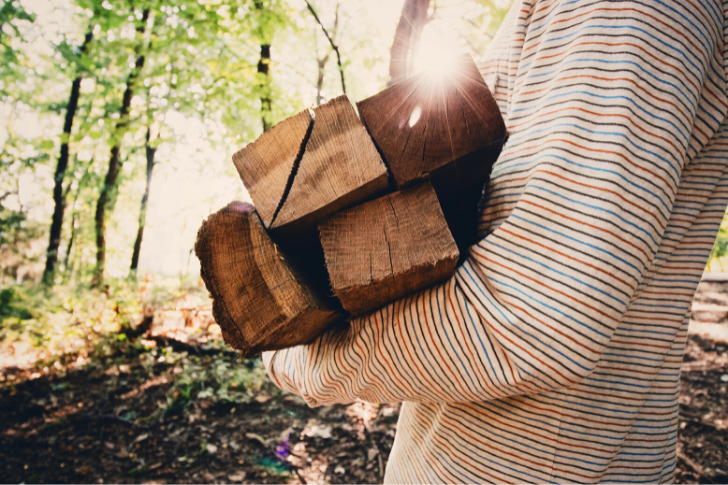
Landscaping Options
When mapping out plans for your beautiful summer garden, there are few fire-friendly rules to incorporate. While you’re thinking about gardening, you may also be interested in reading about our tips for a flood-friendly rain garden.
- Remove ground cover like mulch and plants within 1.5 m of the home
- Prune trees to allow for 2 m clearance from ground to lowest branch
- Ensure your plants are well spaced and low growing
- Ensure any sheds or other outbuildings are at least 10 m away from residence if possible
- Trim branches from trees that are overhanging your home or deck
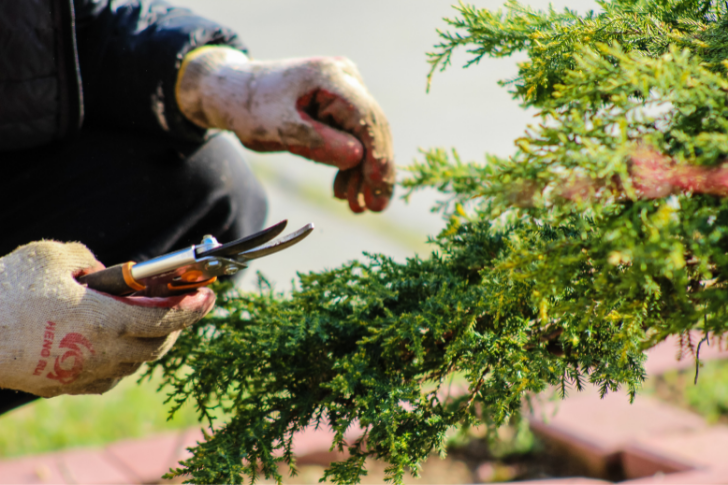
Simple Home Upgrades
While doing home maintenance this summer, consider these changes you can make to your home after a quick stop at a hardware store.
- Install 3mm non-combustible screens on soffits and all external vents (except dryer vents)
- Replace door weather stripping that is old, worn or missing
- Install non-combustible ground materials within 1.5 m of the home (soil, rock, concrete, stone) and ensure 15 cm vertical clearance to the siding
- Ensure fencing and gates near your home are made of non-combustible materials
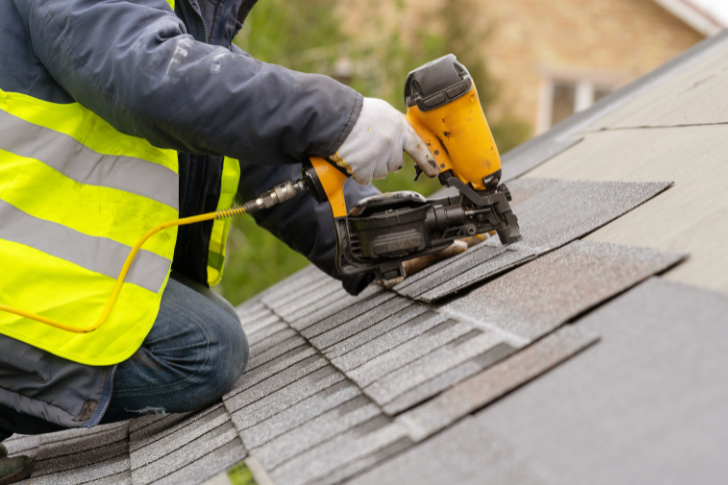
Complex Home Upgrades
If you are undergoing a home renovation, or are eager to take more advanced measures to protect your home from wildfires, consider the following more complex upgrades to your home. These steps may require the support of a professional renovator or contractor. Find a trusted contractor near you by using RenoMark’s professional directory.
- When re-roofing, install Class A fire-resistant roof covering
- When replacing siding, choose non-combustible siding
- Install multi-pane or tempered glass windows and fire-rated doors
- Remove any conifer trees within 10 m of home
- Ensure all deck components are made of fire-safe materials
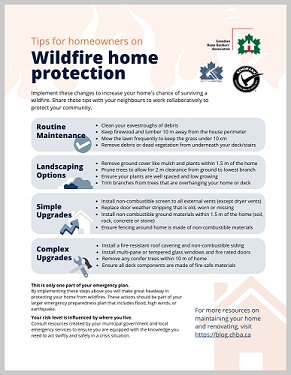 Save these steps for later
Save these steps for later
Click here to access all steps compiled into a resource for you to refer back to and share. We encourage you to share tips and advice with neighbours since collaboration will mean greater protection for everyone in the wildland-urban interface.
This is only one part of your emergency plan.
By implementing these steps above you will make great headway in protecting your home from wildfires. You should also understand how your location affects your risk of wildfires and double-check that your home insurance properly protects your home. These actions should be part of your larger emergency preparedness plan that includes water damage and floods high winds, earthquakes, or wildfire. Consult resources created by your municipal government and local emergency services to ensure you are equipped with the knowledge you need to act swiftly and safely in a crisis situation.
Ready to protect your home from wildfires?
If you are looking for a professional in your area to help you with wildfire damage prevention, check out our professional directory. Hiring a professional is a great way to save yourself time, reduce risk and set your home up for success quickly.

